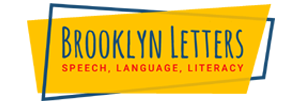Sensory play is critical to a child's development. Critical periods of brain development are greatly impacted by a child's exposure to sensory exploration. Sensory input includes vestibular input, proprioceptive input, tactile input, auditory input, gustatory input, and visual input. Infants start to explore their worlds in a sensory-based way, by touching, smelling, oral exploration, and moving through their environments. Just think of an infant touching a toy, mouthing a toy, banging a toy to make sound, etc. With the importance of sensory input on a child's development, it is important to know how to bring sensory strategies and activities into various environments, as well as understand what a specialized sensory environment entails and can offer for your child's development.
Sensory Experiences in the Home:
The home offers many sensory experiences that occur during everyday activities. Here are a just a few:
- Mealtimes eating various types of foods, manipulating foods with your hands, smelling a variety of types of foods
- Bath time offers exposure to water play, soap, various bath sponges, toys in water
- Motoring around the home crawling over different types of surfaces including carpet, rugs, floors, etc. offer sensory input to the hands as well as provide motor opportunities.
- Here are a few materials available to provide additional sensory experiences in the home setting:
- A therapy ball a child can be bounced, can roll over the ball on their stomach, can receive gentle squishes on their back using the therapy ball.
- Scooter board available on amazon.com or through occupational therapy equipment websites. In the home you would need a solid surface to roll a scooter board on. Scooter boards are great to help build a child's upper extremities as they propel themselves while on their stomachs. They can also sit on the scooter board and scoot along using their feet.
- Shaving cream or soap foam can be used in the bathtub against a vertical surface (bath tub wall) to provide tactile exploration
- Playing with foods offering a variety of dry and wet foods to play with are great opportunities to increase a child's tactile processing. Some examples include: cooked plain spaghetti noodles, making necklaces using cheerios, painting something using pudding, digging hands or feet inside a bin of dry beans, rice, popcorn kernels, etc.
Sensory Experiences in the Community:
There are many community settings that offer sensory exploration including parks, beaches, amusement parks, backyards, museums, etc. Below are just a few suggested community settings and some sample sensory based play activities.
Park Play:
- Swinging on a playground swing
- Swinging on a tire swing
- Climbing on playground equipment
- Climbing across monkey bars
- Playing in a sandbox
- Water play in the park
Beach play
- Playing in the sand with tools and with hands
- Playing in the water
- Swimming
Backyard play or Community Play
- Sprinkler play
- Slip and slide play
- Bouncing on a trampoline (if available)
- Playing chase, red rover, tag, etc
- Bouncehouses
- Sensory Gym Spaces
What does a sensory gym offer
Sensory gym spaces are equipped with specialized equipment and suspension devices to provide unique and sensory enriched experiences. Sensory gym spaces offer children opportunities to receive more intense sensory input in a safe and playful environment. Children benefit from sensory gym spaces when areas of need require equipment that is not accessible in the home or community. Some types of equipment you may see in a sensory gym include:
- A variety of different types of swings
- Large crash pads or pillows for heavy work and deep pressure input
- Trampolines or bouncing equipment
- Various tactile play opportunities bins of dry and/or wet tactile media
- Climbing equipment ladders, ramps, ropes, lycra swings, etc.
- A ball pit
What types of developmental challenges can benefit from sensory input provided in a sensory gym environment
- Self regulation difficulties
- Sensory processing difficulties
- Sensory modulation difficulties
- Motor planning challenges
- Decreased fine motor strength
- Decreased upper body strength
- Difficulties with postural strength and control
- Difficulties coordinating the two sides of their body bilateral coordination
- Sequencing and coordination difficulties
- Body awareness difficulties
- Visual processing challenges that include visual spatial skills, ocular motor control, visual motor skills.
If your child demonstrates challenges related to sensory processing, as detailed above, your child may benefit from an occupational therapy consultation or evaluation in a sensory gym setting. Further information regarding sensory gym spaces and a child's specific developmental challenges can be addressed by an occupational therapist.
Dr. Neeha Patel is a licensed occupational therapist who offers a holistic approach to therapy, drawing from evidenced-based practice techniques, sensory integration theory, neurodevelopmental treatment, family-centered care, and a play-based approach. She is Sensory Integration and Praxis Tests (SIPT) certified, and has extensive experience helping children from birth to 16 years old with sensory processing delays, fine and visual motor delays, social skills, pre-writing and handwriting skills, as well as in their primary activities of daily life. She has worked with varying diagnoses including autism spectrum disorders, learning disabilities, developmental delays, developmental coordination disorder, cerebral palsy, disruptive behavior disorder, and down syndrome. Neeha has special interest and completed her doctoral work in the area of cultural sensitivity when working with children and their families. Neeha offers home, school, or community visits in Manhattan (Upper West Side, Midtown, Chelsea, Clinton, West Village, Soho, Tribeca, Union Square, Murray Hill, Gramercy Park, Upper East Side).
Craig Selinger
Latest posts by Craig Selinger (see all)
- Private-Pay NYC SETSS: Special Education Teacher Support Services - June 29, 2022
- 7 Do’s and Dont’s of Teaching Self-Control to Young Children - June 11, 2022
- 8 Tips to Help Parents Practice Positive Parenting - June 11, 2022
